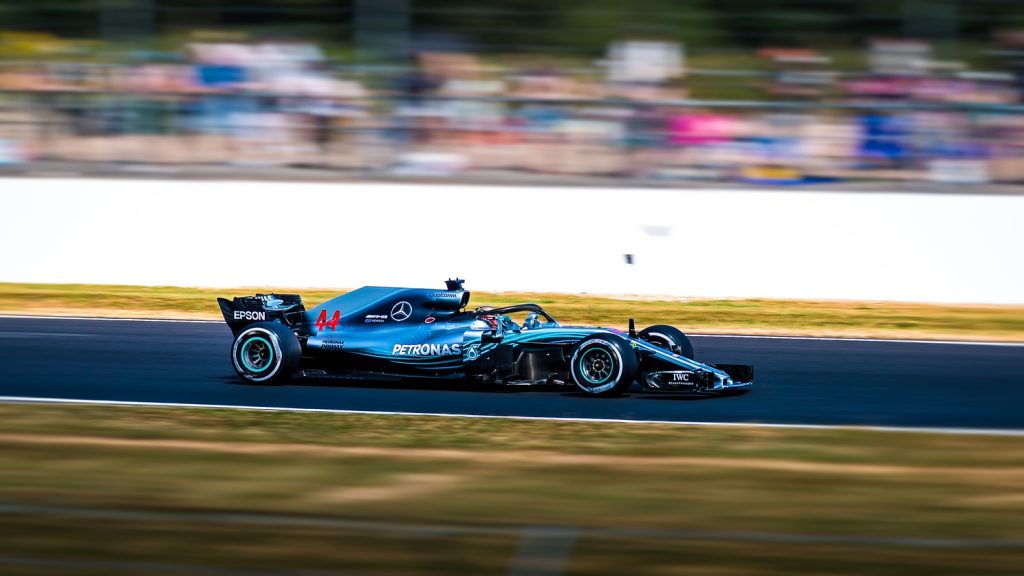
In its seventy-year history, only one black driver has ever sat on the starting grid of a Formula One race. As it happens, that driver has gone on to become one of the greatest competitors that the sport has ever seen.
With six world championships and ninety race victories to his name already, Lewis Hamilton is within touching distance of breaking all the records that matter. Throughout his racing career, Hamilton’s on-track performances have always done the talking, but now it seems as though the 35-year-old Brit believes it is time to speak up.
Having been inspired by this summer’s Black Lives Matter protests in America, Lewis Hamilton has spent much of the year using his vast platform to speak out about racial injustice and inequality. His campaigning has been consistent and unwavering, which in turn has forced others around him to open their eyes and wake up to a reality which has been all too easy to ignore in the past.
At the Tuscan Grand Prix last month, Hamilton once again brought these systemic issues firmly back into the public eye. After claiming victory at the Mugello circuit, Hamilton entered the media paddock sporting a new t-shirt for the weekend. Instead of his regular sponsor-laden Tommy Hilfiger attire, the Mercedes driver appeared with the words, “Arrest the cops that killed Breonna Taylor” emblazoned across his chest.
This was a reference to the fatal shooting of Taylor, a black medical worker, who was killed during a raid when police engaged in gunfire with her boyfriend. As of yet, investigations into the case have not progressed further than a ‘wanton endangerment’ charge for the offending officer.
In a white-dominated sport, it is fair to say that Hamilton’s push for progress has been met with unease by some sectors of motor racing’s old guard. For example, 1978 F1 World Champion, Mario Andretti, appeared dismissive when El Mercurio asked him about Hamilton’s recent activism.
In the interview, Andretti referred to Hamilton’s actions as ‘militant’, before going on to say that “he’s always been respected.”
However, that simply isn’t the case. In 2008, a select group of spectators arrived in blackface at a pre-season testing event in Barcelona, while a ‘voodoo-style’ website aimed at Hamilton was also discovered a few months later. In the end though, the Brit would have the last laugh, as that year he would go on to claim the first of his multiple world championships.
In the same interview, Andretti went on to label this summer’s campaigning within the sport as ‘pretentious’, insisting that it was merely ‘creating a problem that doesn’t exist.’
On Instagram, Hamilton responded by saying “This is disappointing but unfortunately a reality that some of the older generation who still have a voice today cannot get out of their own way and acknowledge there is a problem.
“Again, this is plain ignorance but that will not stop me from continuing to push for change. It is never too late to learn and I hope that this man who I’ve always had respect for can take the time to educate himself.”
Fortunately, while some individuals have dragged their heels, there have also been plenty of positive reactions from within the Formula One paddock.
Mercedes-AMG, for example, are a team known for their silver livery, earning them the nickname ‘the Silver Arrows’. However, for the 2020 season, their cars have been painted black – a very public act that is rooted in practical activism, rather than merely being a symbolic gesture. As explained by team principal Toto Wolff, the colour change is meant to act as a visual reminder of the company’s pledge to address its own lack of diversity amongst its staff.
Hamilton himself has also made tangible efforts to stimulate progress. Earlier in the year, he set up a new board known as The Hamilton Commission, in partnership with the Royal Academy of Engineering. In his own words, Hamilton hopes that the commission can use motorsport as a ‘vehicle to engage more young people from black backgrounds with STEM subjects’. From there, it is hoped that those young people will then be able to forge careers within motorsport or other engineering sectors.
Potentially, they could even find themselves working for Hamilton himself. As the Brit enters his final years as an elite driver, questions have been raised over what will come next. Part of that answer could be team ownership. In September, Hamilton announced the creation of his own racing team, named ‘X44’ – a reference to the number 44 which he has used on his race cars for the past six years.
The team will compete in a brand-new off-road championship called Extreme E. Using fully-electric race-prepared SUVs, the series has been designed to promote greater environmental awareness, and has also been praised for its measures to promote inclusivity. As an acknowledgement of the gender disparity in motorsport, each SUV will be shared between one male and one female driver.
Undoubtedly, Hamilton will view these ventures as a chance to build a legacy, whether that be as a patron of environmentalism, or as a campaigner and facilitator of social inclusivity.
